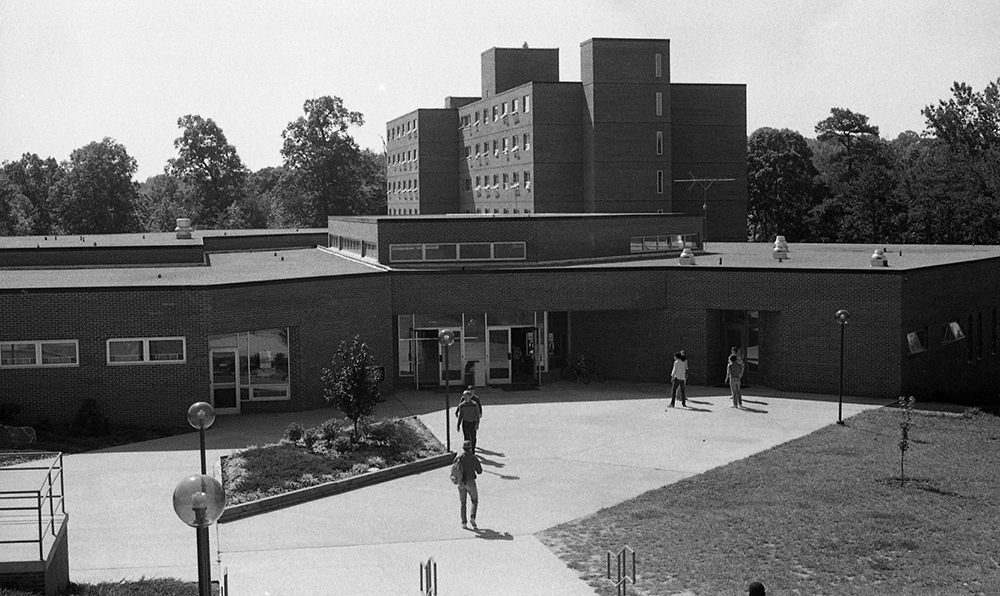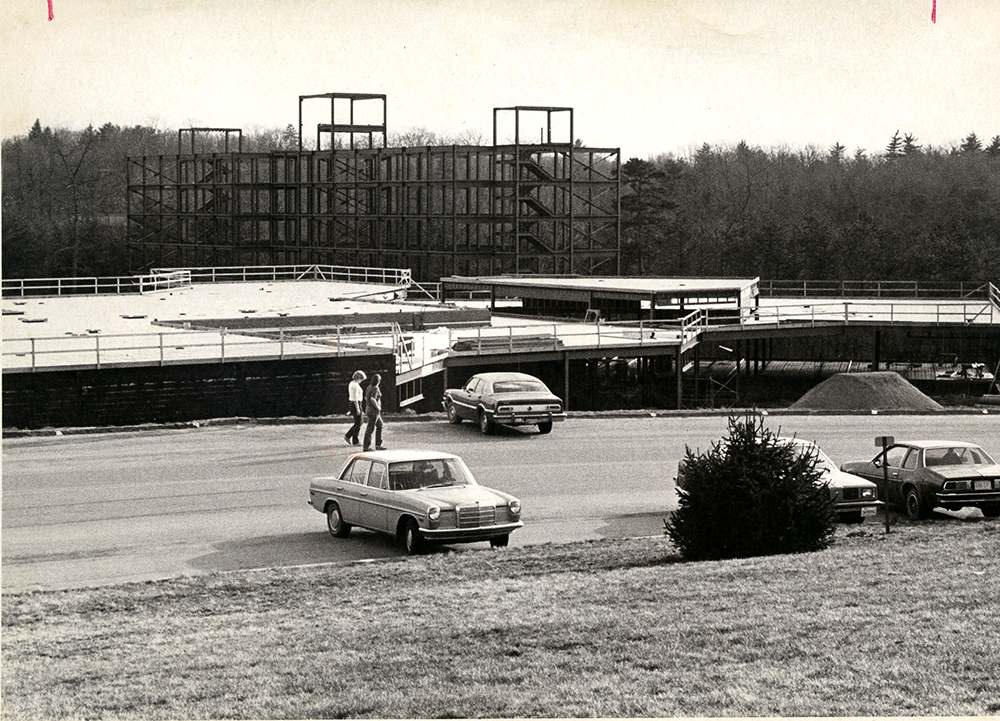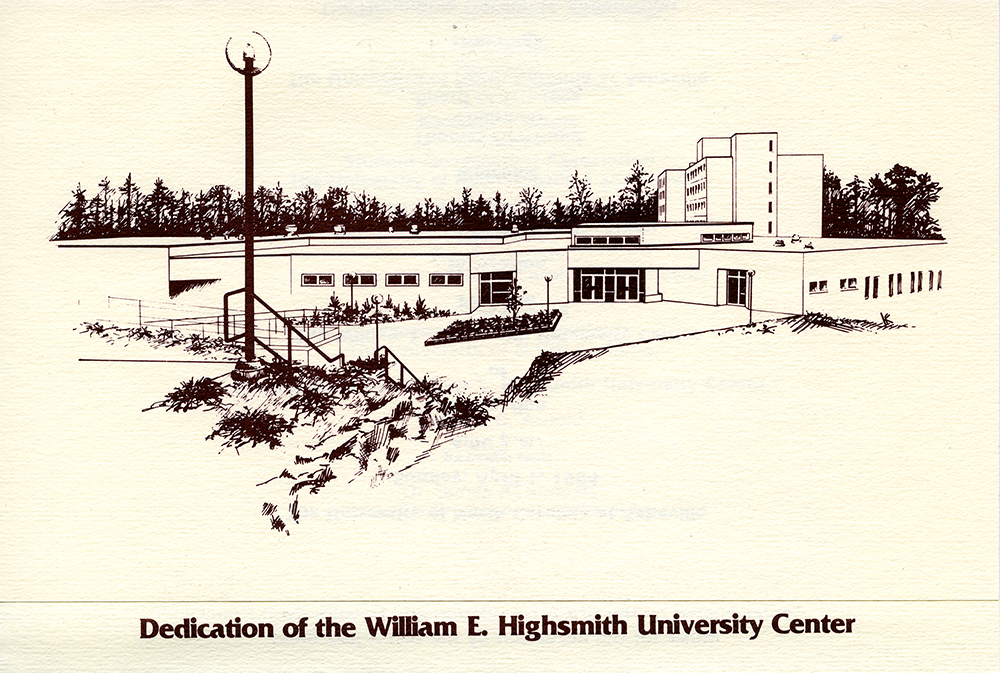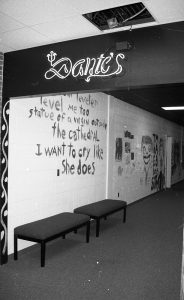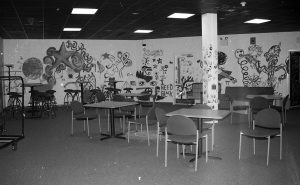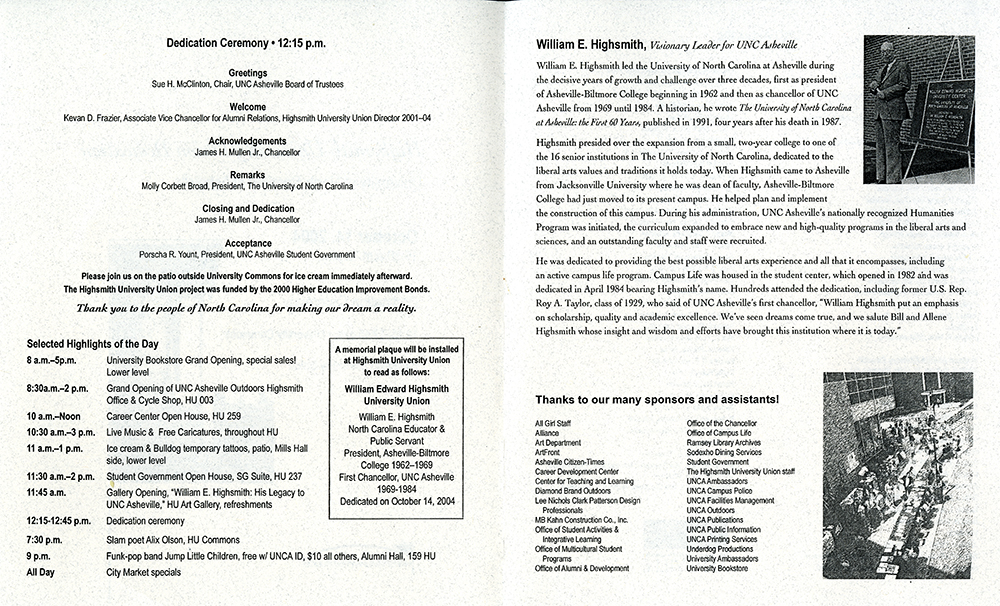At 9pm on February 2, 2007 a choral group sang in the Highsmith Union Building, as two people worked ropes to lower a tarp.
The tarp was covering “The School of Athens,” a mural that was the result of two years’ work by students, faculty, and community members, operating under the direction of UNC Asheville Professor of Art, S. Tucker Cooke.
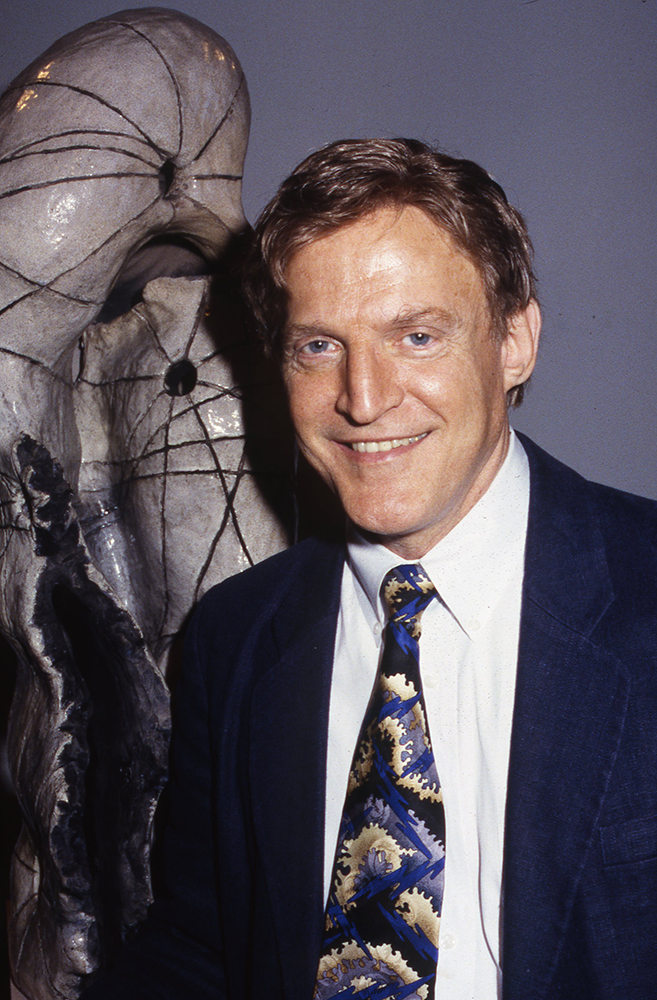
Rapid River Art Magazine (November 2005) reported that when Cooke was asked for ideas for artwork for the expanded Highsmith building, (see our last blog for more information), the School of Athens came to mind, “Because it is the quintessential painting about liberal arts.” The mural represents art, music, mathematics, astrology, philosophy, politics, and astronomy, and includes people such as Socrates, Plato, and Michelangelo.
Cooke did however include some local color in his version, in the form of two UNC Asheville bulldogs sitting together in the lower left corner.
The mural was created in stages.
Using books and drawings of the Vatican fresco, Cooke first photocopied and enlarged Raphael’s line drawings, and then divided these into eight inch squares, from which volunteers produced scale drawings in graphite. The scale drawings were then enlarged to ten inch squares from which volunteers produced brown, white and black paintings called grisailles.
Next, the grisailles were used to paint colored twelve inch square in acrylic. A slide was made of each acrylic square, and the slide was then projected onto a four feet square canvas, so that outlines could be drawn from the projected image. Finally, these outlines were filled in using acrylic paint, and the canvases hung on the wall in sequence.
Cooke told Rapid River Art Magazine that the seemingly tedious process was necessary, because “Drawings help you understand the structure of the composition before starting the final piece.”
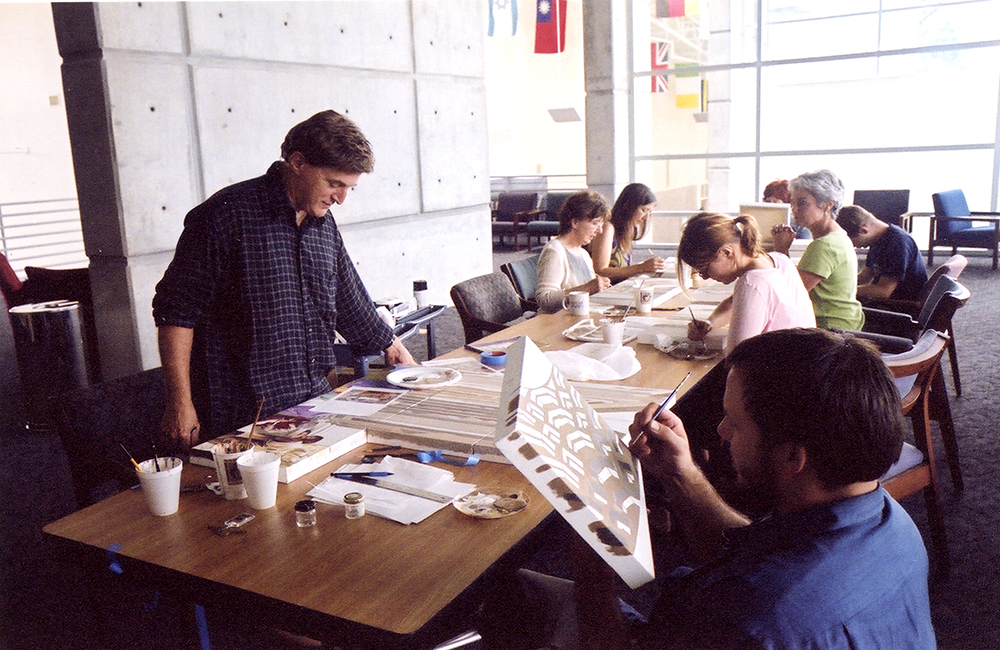
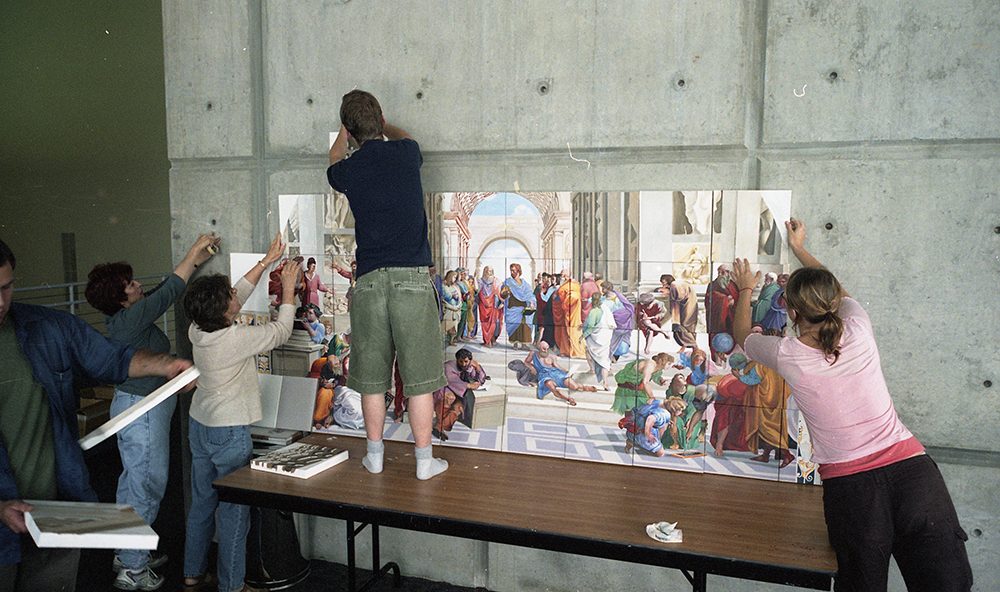
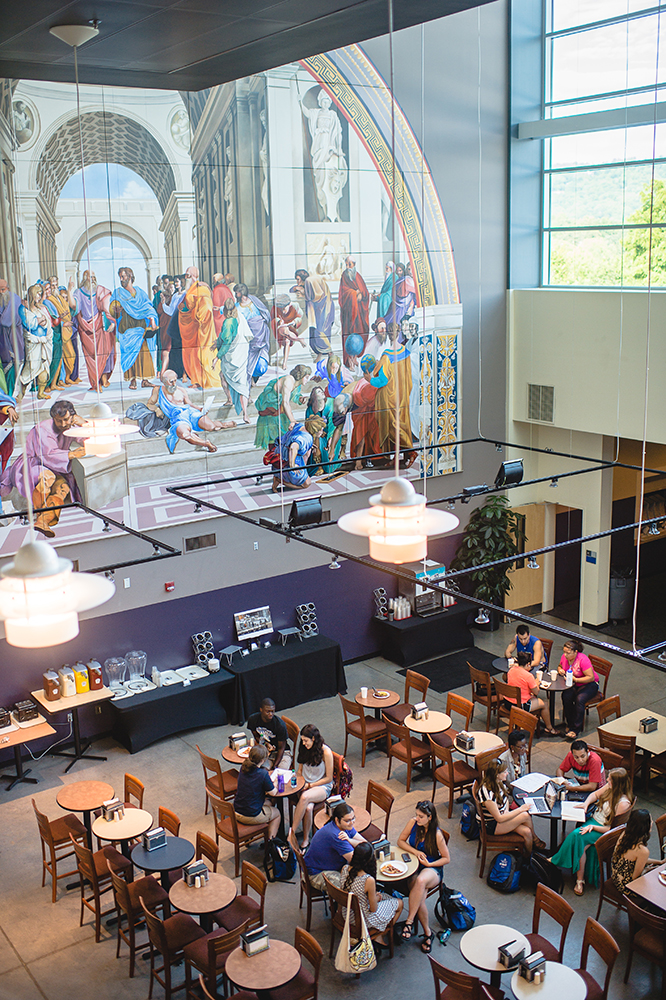
Cooke had come to Asheville-Biltmore College in the fall of 1966, as an instructor in art, immediately after graduating with a MFA from the University of Georgia.
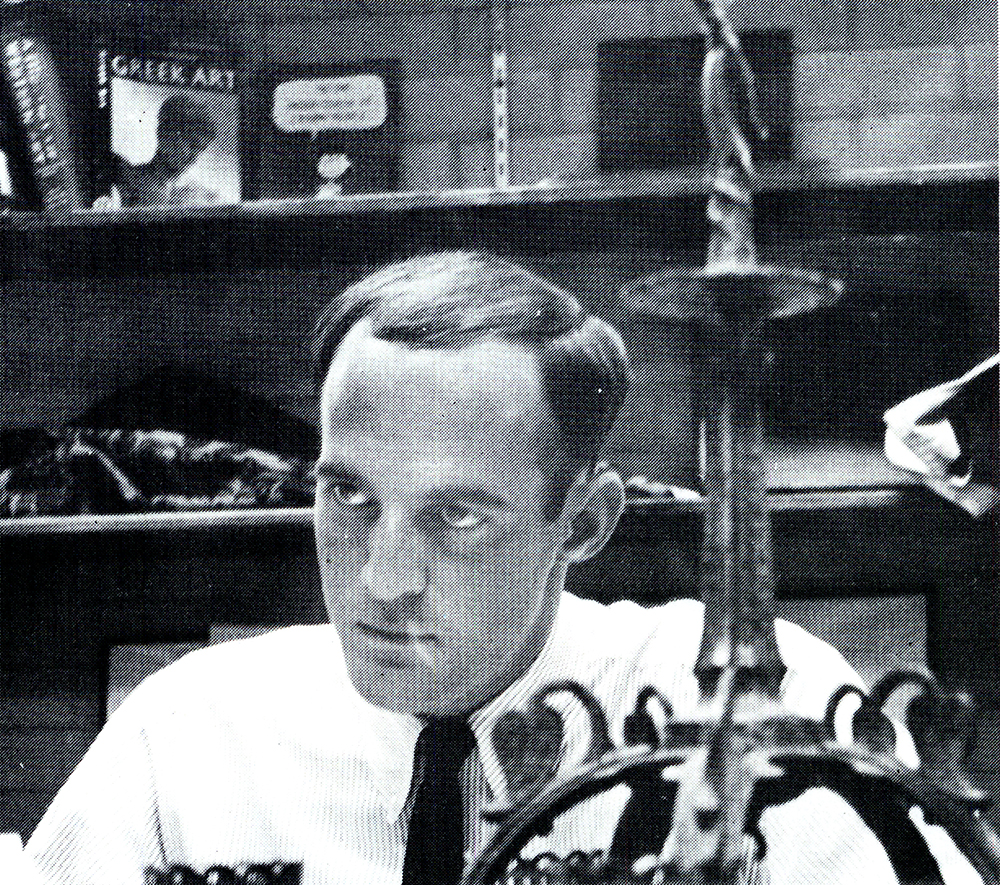
During his time at A-B College and UNC Asheville, Cooke was instrumental in expanding the art department in both size and reputation, and still found time to stage numerous one-man shows, take part in juried exhibitions, and contribute to civic art works.
In 1995, he received a distinguished teaching award from the university, and co-designed a new Chancellor’s Medallion for the installation of Chancellor Patsy Reed.
And, in May 2000, he was awarded the North Carolina Award in Fine Arts, the highest award a civilian can receive from the Governor of North Carolina, for “his art and his ability to teach using personal experience.”
A number of Cooke’s works are part of the permanent exhibition at the Asheville Art Museum.
As our last blog described, the Highsmith Student Union is currently undergoing further renovations. Fortunately, these will not impact the School of Athens mural.
- Colin Reeve, Special Collections


